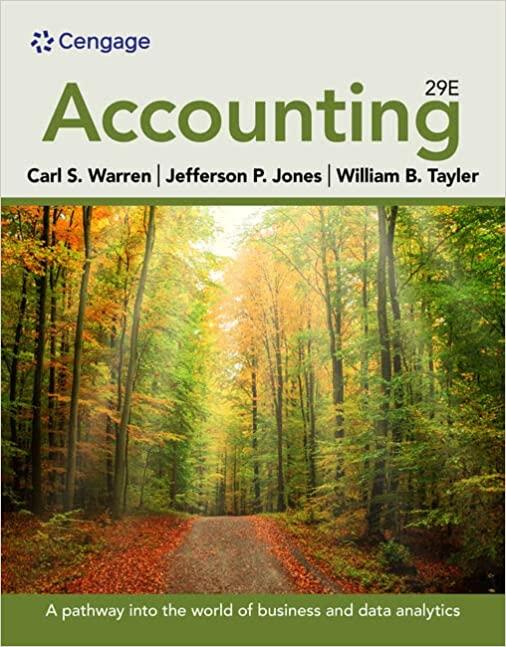Question
BLEES Inc. (BLEES) manufactures leather jackets and leather bags for various designers. The company has three divisions - a jacket division, bag division and leather
BLEES Inc. (BLEES) manufactures leather jackets and leather bags for various designers. The company has three divisions - a jacket division, bag division and leather division. The jacket and bag divisions make high-quality products in a range of prices. The leather division sources and prepares the raw materials (i.e., leather) needed for both divisions. BLEES's mission is: "We strive to be Canada's number one tailor, making the highest-quality leather goods."
Today is March 7, 2020. You, CPA, are a newly hired finance manager, reporting to BLEES's CEO, Alex Boulanger. Alex called a meeting to discuss some issues.
Alex:
I am very pleased with our fiscal 2019 results. Our profits have improved for both manufacturing divisions compared to the previous year. The jacket division sold 2,500 more units than budgeted and the bag division is very close to budget. However, I noticed that the jacket division shows some significant variances (Appendix I and II).
Rexina, purchasing manager:
In 2019, we acquired a new high-end client, Node Inc. (Node). Alex's long-time friend Cecilia Lee is the CEO of Node. Cecilia has grown her business much faster than expected and brings us all her work. Node's business represented 15% of our total sales and we expect it to grow even more next year. However, Cecilia is a perfectionist and only wants very specific materials, which are more expensive than the materials used for our other high-end clients.
Julian, production manager (jacket division):
Node's jackets are very detailed and require more labour. Unfortunately, Cecilia rejected many items during the quality control process that occurs at the 90%-completion point. This led to us reproducing a high volume of jackets for Node. Because Node owns the design, we could not sell the rejected items and they had to be scrapped.
We used to assign our senior tailors to various high-end work, and they would spend any remaining hours supervising and training our junior tailors. However, they no longer have time for this. We now need more senior tailors dedicated to work and quality control for Node and recently we replaced two junior tailors who worked on Node products with two senior tailors. We charged Node more than our average customer, but I think we should have charged even more. If we charged a higher price, we would not have had the material and labour variance issues.
Alex:
CPA, please calculate the labour rate and efficiency variances as well as the materials price and usage variances. I would also like you to explain where these variances, if any, are coming from and suggest improvements.
Louis, production manager (bag division):
I want to talk about the transfer pricing between the bag and leather divisions. Last year, the leather division's performance targets were changed from cost focused to profit focused. We used to pay only the leather division's variable costs but this year we paid a negotiated price, which is slightly higher than the leather division's variable costs. Dennis, the leather division manager, is now asking for the same price that he charges external customers, who by the way, only account for 10% of his business. He says that if the bag division does not agree with the price, he will fill external orders first and only fill internal orders when he has idle capacity. He is actively searching for more external customers. If I purchase the same quality leather from other suppliers, it will cost much more than this year's negotiated price which will negatively affect my profits. I can only maintain raw material costs by sourcing lower-quality materials.
Alex:
The leather division has always generated a small profit even though it has operated at about 85% capacity for the past 10 years. In an effort to improve profitability, I changed the leather division from a cost centre to a profit centre; however, this appears to be causing problems between the divisions. CPA, please explain what factors we need to consider in setting our transfer price policy and how we can fix this problem between the divisions.
Julian:
Before we wrap up, CPA, we have a piece of machinery that we need to replace. We can either buy or lease the new machine and we would like your analysis and recommendation. (Appendix III)
After the meeting, Alex tells you that both Julian and Dennis believe they should get a big bonus this year. Julian believes this because his division's static budget variance was significantly favourable while Dennis believes this because his division generated a higher profit than last year. Alex wants you to explain whether or not they should get larger bonuses.


Step by Step Solution
There are 3 Steps involved in it
Step: 1

Get Instant Access to Expert-Tailored Solutions
See step-by-step solutions with expert insights and AI powered tools for academic success
Step: 2

Step: 3

Ace Your Homework with AI
Get the answers you need in no time with our AI-driven, step-by-step assistance
Get Started


